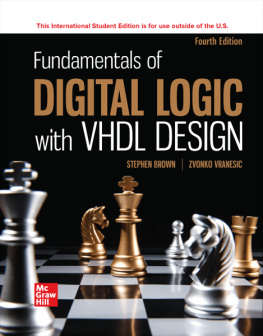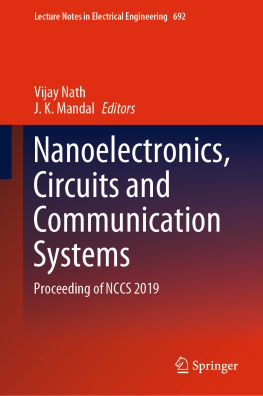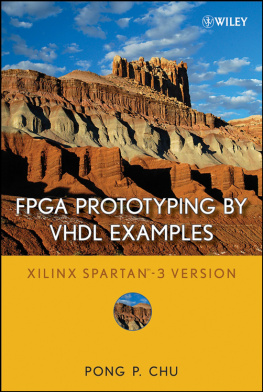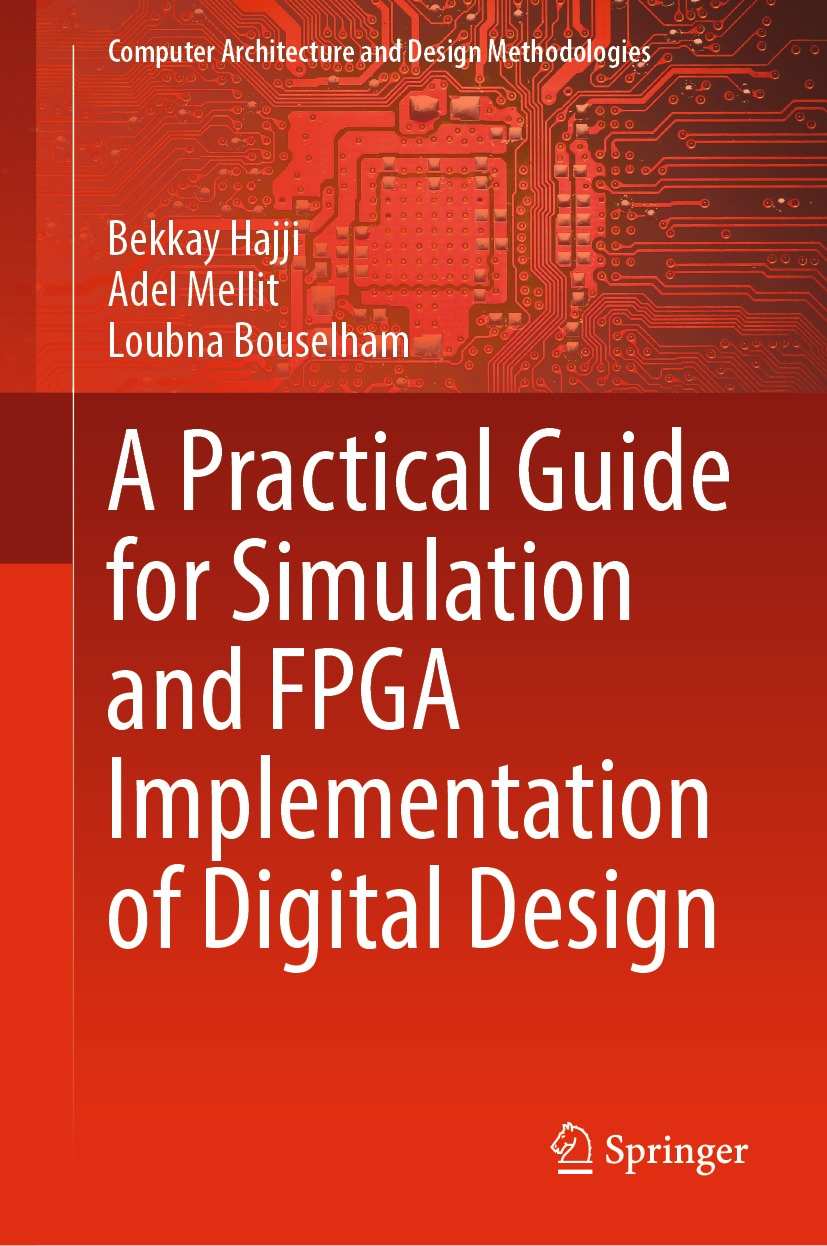Computer Architecture and Design Methodologies
Series Editors
Anupam Chattopadhyay
Nanyang Technological University, Singapore, Singapore
Soumitra Kumar Nandy
Indian Institute of Science, Bangalore, India
Jrgen Teich
Friedrich-Alexander-Universitt Erlangen-Nrnberg (FAU), Erlangen, Germany
Debdeep Mukhopadhyay
Indian Institute of Technology Kharagpur, Kharagpur, West Bengal, India
Twilight zone of Moores law is affecting computer architecture design like never before. The strongest impact on computer architecture is perhaps the move from unicore to multicore architectures, represented by commodity architectures like general purpose graphics processing units (gpgpus). Besides that, deep impact of application-specific constraints from emerging embedded applications is presenting designers with new, energy-efficient architectures like heterogeneous multi-core, accelerator-rich System-on-Chip (SoC). These effects together with the security, reliability, thermal and manufacturability challenges of nanoscale technologies are forcing computing platforms to move towards innovative solutions. Finally, the emergence of technologies beyond conventional charge-based computing has led to a series of radical new architectures and design methodologies.
The aim of this book series is to capture these diverse, emerging architectural innovations as well as the corresponding design methodologies. The scope covers the following.
Heterogeneous multi-core SoC and their design methodology
Domain-specific architectures and their design methodology
Novel technology constraints, such as security, fault-tolerance and their impact on architecture design
Novel technologies, such as resistive memory, and their impact on architecture design
Extremely parallel architectures
More information about this series at https://link.springer.com/bookseries/15213
Bekkay Hajji , Adel Mellit and Loubna Bouselham
A Practical Guide for Simulation and FPGA Implementation of Digital Design

Logo of the publisher
Bekkay Hajji
National School of Applied Sciences, Mohammed first University, Oujda, Morocco
Adel Mellit
Renewable Energy Laboratory, University of Jijel, Jijel, Algeria
Loubna Bouselham
National School of Architecture, Oujda, Morocco
ISSN 2367-3478 e-ISSN 2367-3486
Computer Architecture and Design Methodologies
ISBN 978-981-19-0614-5 e-ISBN 978-981-19-0615-2
https://doi.org/10.1007/978-981-19-0615-2
The Editor(s) (if applicable) and The Author(s), under exclusive license to Springer Nature Singapore Pte Ltd. 2022
This work is subject to copyright. All rights are solely and exclusively licensed by the Publisher, whether the whole or part of the material is concerned, specifically the rights of translation, reprinting, reuse of illustrations, recitation, broadcasting, reproduction on microfilms or in any other physical way, and transmission or information storage and retrieval, electronic adaptation, computer software, or by similar or dissimilar methodology now known or hereafter developed.
The use of general descriptive names, registered names, trademarks, service marks, etc. in this publication does not imply, even in the absence of a specific statement, that such names are exempt from the relevant protective laws and regulations and therefore free for general use.
The publisher, the authors and the editors are safe to assume that the advice and information in this book are believed to be true and accurate at the date of publication. Neither the publisher nor the authors or the editors give a warranty, expressed or implied, with respect to the material contained herein or for any errors or omissions that may have been made. The publisher remains neutral with regard to jurisdictional claims in published maps and institutional affiliations.
This Springer imprint is published by the registered company Springer Nature Singapore Pte Ltd.
The registered company address is: 152 Beach Road, #21-01/04 Gateway East, Singapore 189721, Singapore
Preface
In recent years, the digital systems market has exploded in many industrial and consumer sectors such as telecommunications, satellites, medical devices, vehicles and robots. These increasingly important needs generate fierce industrial competition where factors such as cost, performance and above all Time To Market became essential for the success of a product. In addition, design productivity will be the real challenge for future systems. In this context, the FPGA (Field Programmable Gate Array), with its great integration and reconfiguration capacities, constitutes a key element for the rapid development of prototypes. In order to encourage the wide dissemination of this type of circuits, it is necessary to improve the development environments to make them more accessible to non-electronics experts.
This book is the result of many years of teaching a course in digital systems design and embedded systems (for undergraduate and postgraduate students) at the National School of Applied Sciences in Oujda, Mohamed Premier University, (Morocco) and at the Faculty of Science and Technology, Jijel University, (Algeria). The target audience are electrical engineering students (universities and engineering schools) as well as designers of modern digital systems.
The objective of this book is to serve as a practical guide for the FPGA simulation and implementation of digital design for all those who have already learned the classic digital design (like combinational logic and digital design). The book makes a clear contribution by offering case studies to demonstrate the books teachings in practice for the design and implementation of digital systems.
The book is composed of four parts. The first part of this book has two chapters and covers various aspects: FPGA architectures, ASIC versus FPGA comparison, FPGA design flow and basic VHDL concepts necessary to describe the design of digital systems. The second part of the book includes three chapters, deals with the design of digital circuits such as combinational logic circuits, sequential logic circuits and finite-state machines. It is a largely hands-on lab class for design digital circuits and then implementing their designs on an FPGA platform (Altera or Xilink). The third part of the book is reserved to digital projects carried out on the FPGA platform, a good number of laboratory projects have been addressed. Finally, the fourth and last part of this book is devoted to recent research work and applications carried out on FPGA including Artificial Intelligence techniques in renewable energy systems. Some real-time examples have been presented and discussed in details.
Structure of This Book
The book consists of four parts and eight chapters:
The first part of this book consists of Chaps. described below:
Chapter covers an introduction to FPGA, including FPGA architectures, design metrology, design tools and a brief comparison between ASIC and FPGA.
Chapter discusses the basic VHDL concepts. First, we introduce the hardware description language, followed by VHDL design units. Next, the key VHDL constructs like concurrent functionally, sequential statement and structural statements are presented. Finally, various Test-Benches have been presented.












